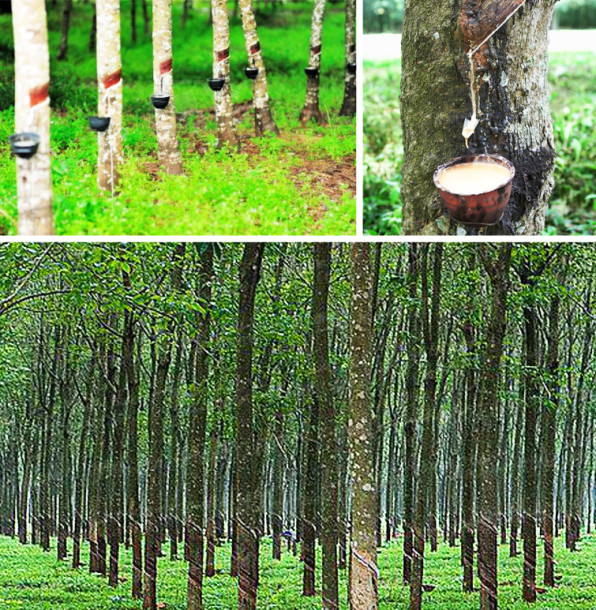Contrary to what a number of well-intentioned people who care deeply about the earth’s ecology think, there are types of Balloons that are environmentally safe – and these are the Balloons we are using for our Balloon Decoration Packages. Most of these organizations who think that balloons are bad for the earth lack the facts about how balloons are made and decompose. Several other write-ups about the safety of Balloons can be found on the internet – most notably from The Balloon Council, Balloon Boutique, Eco Party Box & Earth Happy.
Latex Balloons are 100% biodegradable. Yes, they are perfectly safe for the environment because Latex comes from the sap of Rubber Trees and it breaks down when exposed to the elements of nature. This simply means that the more Latex Balloons are needed, the more Rubber Trees are planted.
Oxidation is the very first step to the break of a latex balloon. It starts after just a few minutes after inflation. It usually appears as a cloudy appearance and it is most visible when exposed to direct sunlight, humid air, and even on a cold weather. When inflated with helium or hydrogen, Latex Balloons can fly to as high as 8 kilometers in distance and then it becomes brittle and shatters into small pieces falling back to earth at a rate of one piece every 8 square kilometers. These balloons released above breakdown easily because of the changing temperature. It looks similar to a sticky-like spaghetti and biodegrade easily when it reaches the ground. Some balloons, which are not inflated very well nor has a weight that restricts its flight, usually stays at a much lower level therefore does not reach the height at which shattering occurs. Air-inflated non-flying Latex Balloons usually decompose about 6 months.\
Because most customers do not have the time to sort things out and know the myths and facts about Balloons being environmentally friendly, it often results in a negative perception that balloons are bad.
Often perceived as plastics, which is not the case, Latex Balloons are eco-friendly materials because it comes organically from Rubber Trees, which are collected through an absolutely harmless tapping process. These are the same materials used to make Rubber Bands and other Rubber materials.
Within three hours, most latex balloons released into the atmosphere rise to approximately eight kilometers, start to oxidize, freeze and explode into very small pieces. Once on the ground gases and microorganisms harass the latex, continuing the innate decay process.
Mylar Balloons or Metallized Plastics are NOT good for release to the atmosphere. Considered a recyclable material but not ecological, Mylar Balloons are synthetic nylon materials that are bad for the earth.
Hydrogen or Helium-filled Metallized balloons do get away by chance, because a string breaks or a consumer lets it go but these incidents seem to be diminishing because of ongoing in-store awareness campaigns to encourage anchoring these balloons with decorative weights. Most stores here in Cebu no longer inflate Mylar Balloons with Hydrogen to help save the environment from non-biodegradable materials. The most notable people who are selling Mylar Balloons that fly can be found in churches but are losing ground.
So if you think Balloons are not eco-friendly, think again. Go to Bukidnon or other places in the Philippines that has a wide plantation of Rubber Trees and you will be amazed.
This page is last updated on







 Dessert Buffet
Dessert Buffet
























